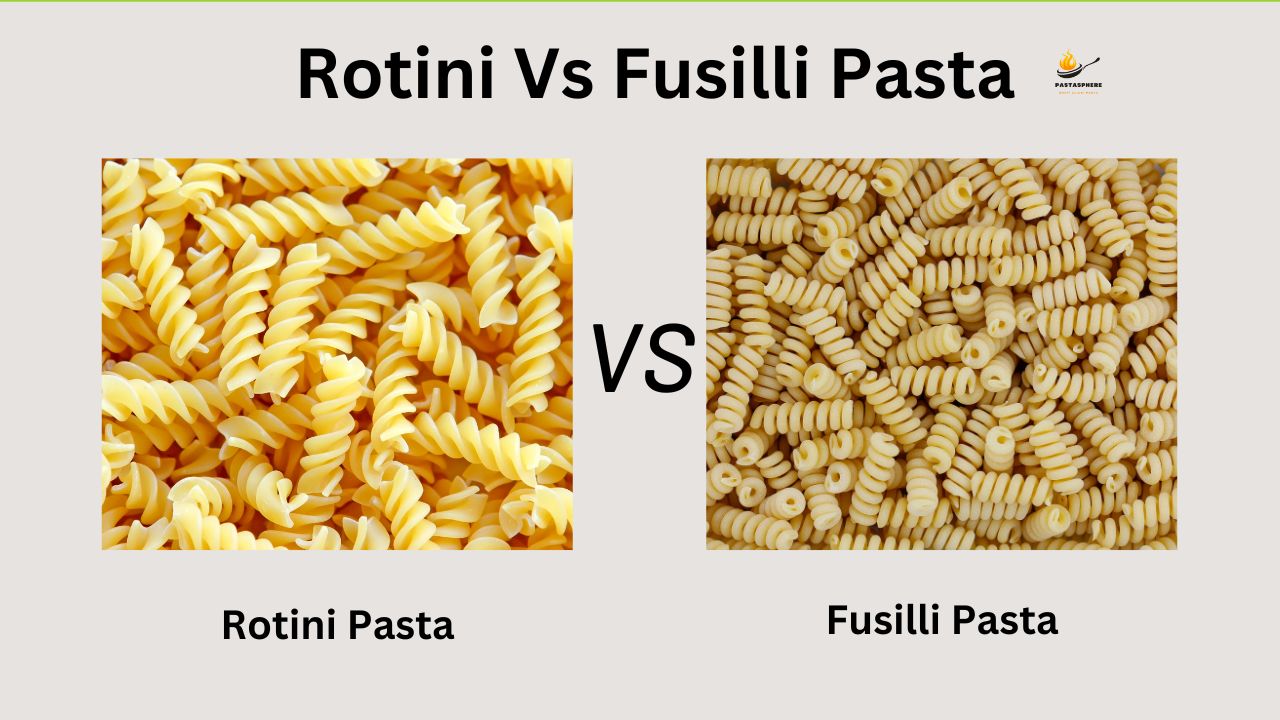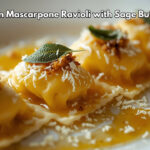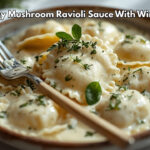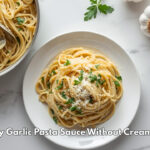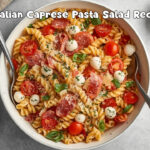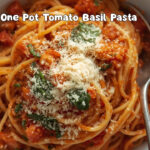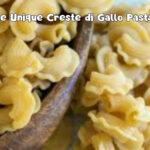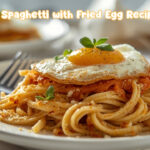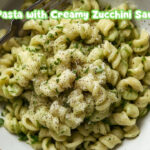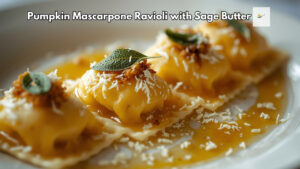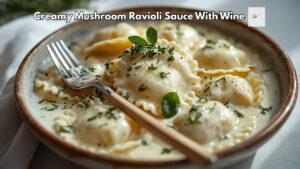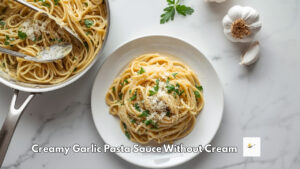Table of Contents
ToggleWhen it comes to rotini vs fusilli pasta, fusilli is a spiral-shaped pasta type with a tighter twist and a smooth surface. On the other hand, rotini is a shorter corkscrew-shaped pasta with ridges along its texture.
There are over 350 different pasta types worldwide, but sometimes, it can be hard to distinguish among the numerous shapes. With so many different pasta shapes and sauces, the cooking options with this staple are limitless. Rotini vs Fusilli pasta are two pasta types commonly found on kitchen shelves. Both are spiral-shaped and often look alike at first glance. Fusilli and Rotini have corkscrew shapes, but if you examine them closely, you’ll notice some differences. However, the slight differences between them can affect your dishes.
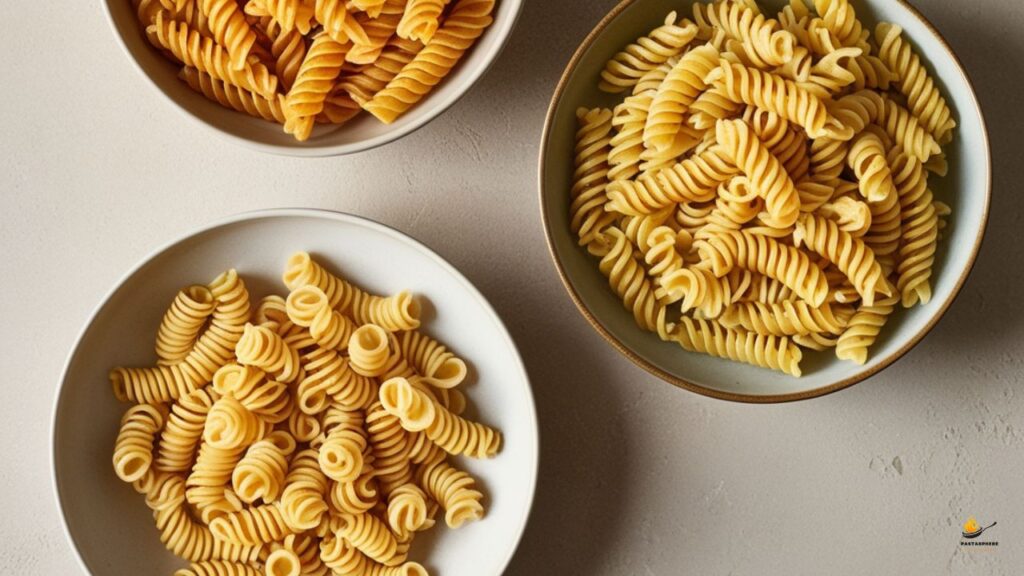
Origin of Rotini vs Fusilli pasta:
The foremost commonality between Fusilli vs Rotini pasta is that they both originated in Italy, a country renowned for its rich pasta tradition. Italy is globally prominent for its variety of pasta shapes and for being a central element in Italian cuisine. These specifically designed pasta shapes effectively hold and capture sauces, allowing them to absorb and hold onto flavors better than many other types of pasta.
Now, let’s begin the culinary exploration of Fusilli vs Rotini pasta, discovering their similarities, what sets them apart, and the best ways to enjoy them. Shall we?
Discovering the Similarities:
Rotini and Fusilli, both popular pasta shapes, have similarities, but the question “is fusilli the same as rotini” making us easily confused when placed together. The key similarities between these pasta shapes are:
The swift twist of Rotini:
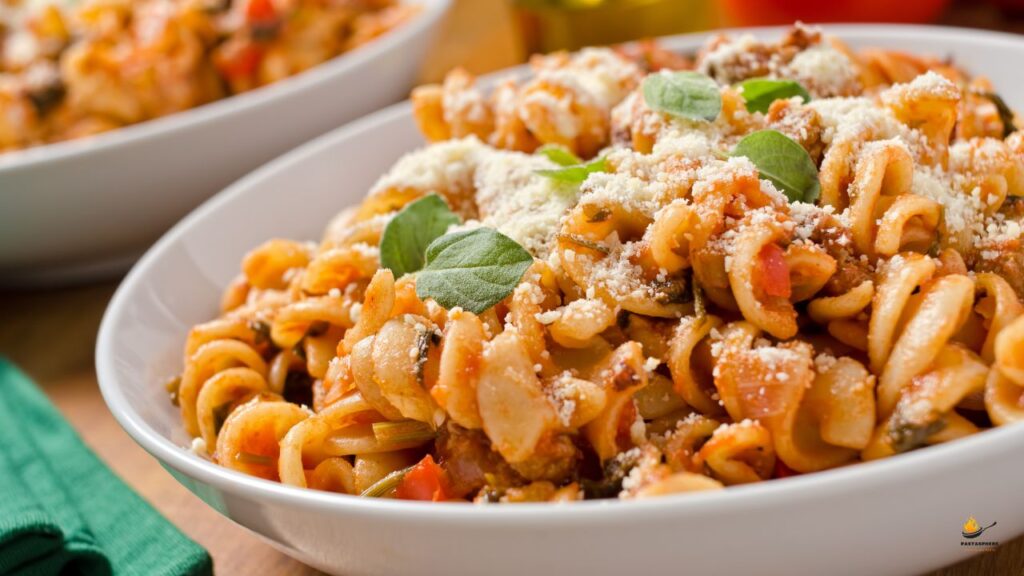
Rotini, in contrast, is a shorter, tightly curled spiral pasta. The word “Rotini” is derived from the Italian word “ruotare,” which means “to rotate” or “to twist.” It has a tighter, springy texture than Fusilli. Rotini is made by curling the pressed pasta dough into close twists. Rotini is often used in soups, pasta bakes, and dishes with lighter sauces since its compact shape captures sauce well.
The spiral swirl of Fusilli:
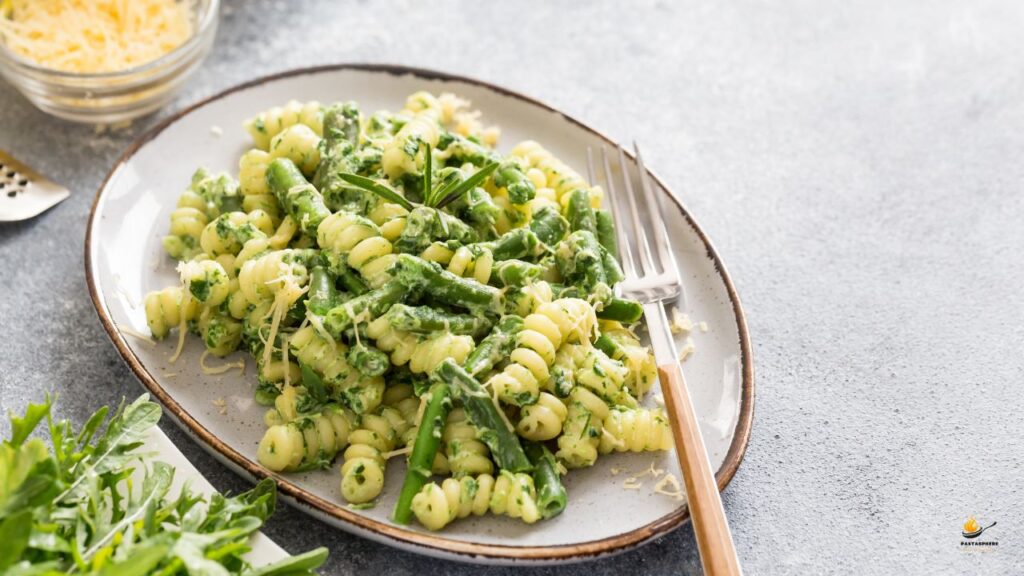
Fusilli is extracted from the Italian word “fuso,” meaning spindle. The spiral swirl of Fusilli is not only its most appealing feature but also highly useful in cooking. These spirals are great for picking up finely chopped bits like carrots, onions, pancetta, and ground meats. The gaps between the spiral curls are perfect for trapping sauce, ensuring each piece of Fusilli is thoroughly coated. The Fusilli’s texture makes a pleasant contrast between the tender pasta and the sauce. Due to its unique shape, it’s best served with thick-hearty sauces or creams and is also popular in pasta salads.
Discovering the Differences:
At first glance the question raise in our mind, “is fusilli the same as rotini”, they may appear the same, but some key differences distinguish these two spiral kinds of pasta. Let’s uncover them.
Spiral shape:
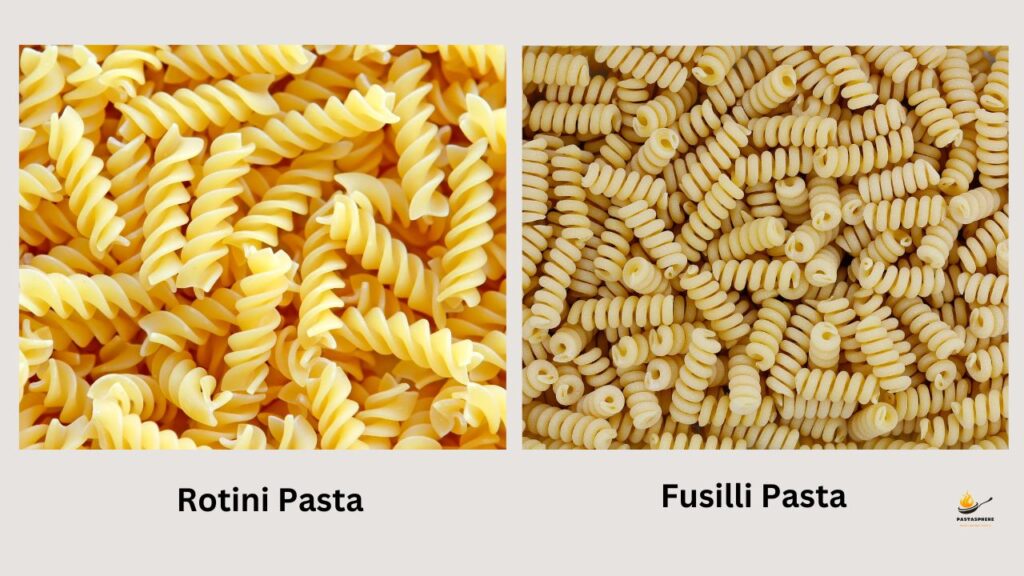
The critical difference between fusilli and rotini is their shape. While both types are spiral-shaped pasta, Rotini is extruded directly into the spiral shape and tends to be more open, comprehensive, and loose than the tighter corkscrew shape of Fusilli. Fusilli is made by winding long strands of pasta dough around a rod, creating a tighter, more uniform spiral shape.
Texture:
Rotini and Fusilli generally have a smooth texture, creating a more polished and enhanced presentation of the pasta dish. The smooth surface allows it to work well with various sauces cling to the pasta, making each bite flavorful and delicious. Fusilli is typically thick and heartier in texture compared to the more tender, thinner rotini pasta.
Adaptability for sauces:
Due to its tighter twist design, Rotini is often used in lighter sauces, broth and oil-based dishes, or salads. On the other hand, the open spiral of the Fusilli structure is mainly used for trapping creamy sauces, and it is also a better partner for holding up heavier, chunky sauces and casseroles.
Fusilli Pasta Vs Rotini pasta ingredients:
Rotini and Fusilli pasta is made from the same kind of dough. They are made from durum wheat semolina mixed with water, kneaded into a dough, squeezed through a die with a spiral or corkscrew shape, and slowly dried using a unique process.
Cooking method for Rotini vs Fusilli:
There is no difference between fusilli and rotini cooking method. Add a generous amount of salt to the rolling boiling water. Then, put the pasta in the boiling water. Rotini requires less time in the water. 8-10 minutes is the sweet spot for Rotini. But aim to cook the pasta al dente, which means it should be slightly firm when bitten.
The primary cooking difference is that Fusilli require more time than Rotini. However, always check the package instructions to be sure. Once it is ready, drain the pasta and immediately toss it with sauce or ingredients.
What sauces are used with Rotini Vs Fusilli pasta?
The shape of the pasta can tell you what it is intended for. In Southern Italy, fresh rotini and fusilli pasta are often eaten on Sundays or feast days with a meat or sausage ragu.
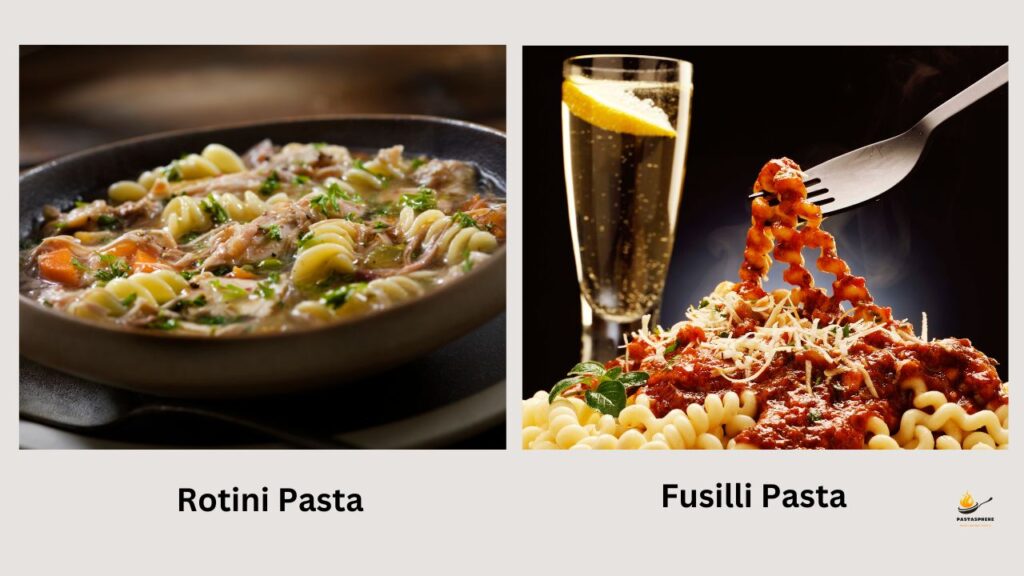
In the North, where dried pasta is more popular, Italians like rotini and fusilli pasta in salads or with lighter creamy sauces, pesto, and vegetarian pasta dishes.
Nutritional Value profile of Rotini vs Fusilli pasta:
These numbers represent are for dry pasta. However, nutritional values may change slightly after cooking.
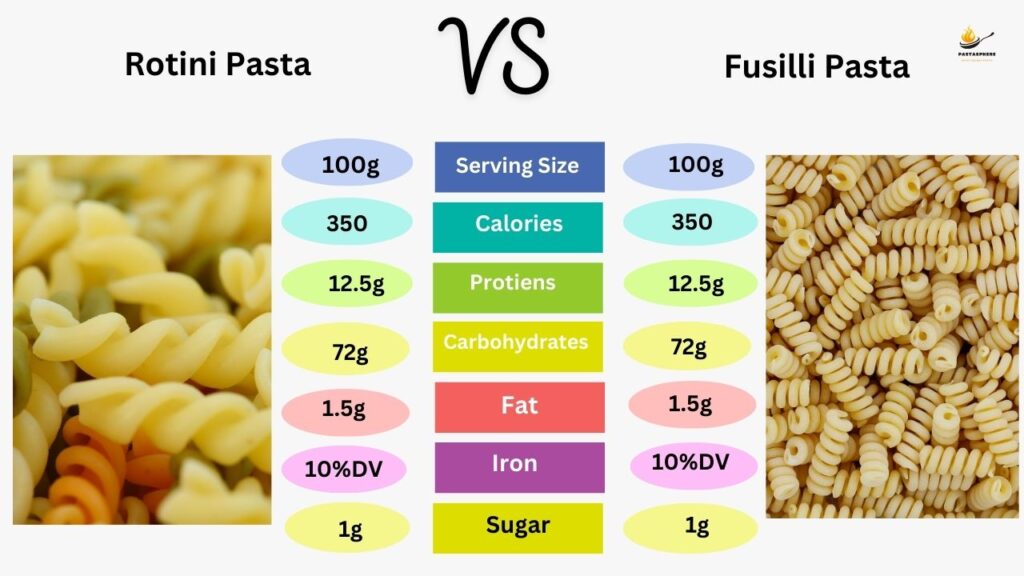
Storage methods for Rotini and Fusilli:
Pasta is more than pasta since you can have different pasta dough blends. Fresh and dried pasta taste very different when cooked and stored.
Fresh Rotini and Fusilli pasta should be used soon after preparation. To store them briefly, gently flour the pasta to avoid sticking, and arrange it in a single layer on a baking sheet. Cover the sheet and refrigerate for up to a day or two.
Frozen fresh pasta is an excellent option for extended storage. Place the pasta in layers, separated by non-stick paper, within an airtight box. This method can store fresh Fusilli and Rotini for up to three months in the freezer.
However, dried pasta requires storage in a cool and dry place, such as a pantry or kitchen cupboard. Dried pasta usually keeps well for years in storage.
Can rotini substitute fusilli?
The spiral-shaped pasta Rotini vs Fusilli pasta are similar in appearance and texture, which makes Rotini substitute for Fusilli and vice versa. Their spiral and twisty curves are ideal for adhering to different sauces: thin, like a light herb dressing or pesto, or thick, like a hearty meat or cream sauce.
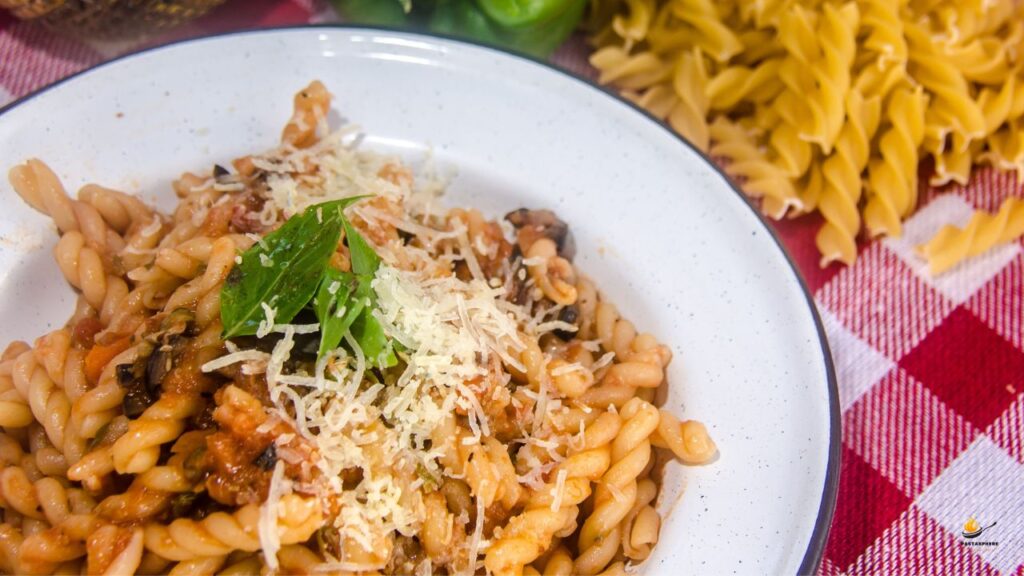
Beyond the classic short spiral pasta, Gemelli pasta is also an excellent substitute for Fusilli and Rotini. It is made of two short strands of pasta slightly twisted together, like two twisted ropes. This pasta shape effectively locks and traps all kinds of sauces.
Try these wonderful pasta recipes to make with Gemelli pasta. You won’t regret it.
Summary:
Rotini vs Fusilli pasta, the main differences between these two types of pasta are the thickness, length, and tightness of the spiral shape. Fusilli has a chewier, more open spiral, while Rotini is more compact and springier. However, both pasta shapes have a unique charm and ability to elevate your Italian dishes.
Both pasta types are commonly recognized and loved pasta across the world. The different shapes are essential because of the mouthfeel and how they carry other ingredients. Every pasta shape has a specific function. Ridges, twists, tubes, and thickness have different mechanisms for delivering the flavor and texture of sauces, meats, cheeses, or vegetables. For more interesting pasta facts and guides, keep following PastaSphere!
Frequently asked questions
Why is fusilli the best pasta?
This specific curvy pasta is a great option for pasta salads and chunky vegetable sauces. Fusilli also pairs well with delicate cream sauces since its shape can capture the dense texture.
Are Fusilli and Rotini gluten-free options?
Traditional Fusilli and Rotini contain gluten as they are made from wheat. However, gluten-free alternative flours are available in many markets. Gluten-free pasta has higher protein, fibre, and micronutrients than regular wheat-based pasta.

